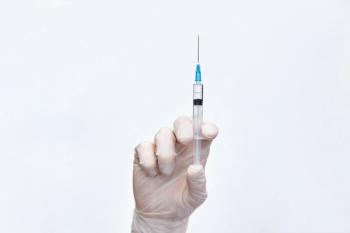
Aspirin fails in Japanese primary prevention study
If patients have multiple risk factors, daily low-dose aspirin may not make much difference to their potential for CV events.
A new Japanese trial showed no benefit of low-dose, once-daily aspirin in the primary prevention of cardiovascular events in patients with multiple risk factors.
The Japanese Primary Prevention Project (JPPP) included 14,464 patients from 60 to 85 years of age, who had hypertension, dyslipidemia, or diabetes mellitus. They were randomized to receive either aspirin 100 mg daily or placebo. Median follow up was 6.5 years.
No benefit was seen for the composite endpoint of nonfatal myocardial infarction (MI), nonfatal stroke, or death from cardiovascular causes. There were significant reductions in MI and transient ischemic attack (TIA), but this benefit came with a significant increase in serious bleeding events.
The overall rate of events was much lower than anticipated in the study, and it did not reach statistical significance. The authors concluded that further analysis is needed to identify patients who may benefit most from aspirin.
More studies are ongoing (ARRIVE, ASCEND, ASPREE, and ACCEPT-D), which are assessing primary prevention in predominantly Western populations.
Source: Ikeda Y, Shimada K, Teramoto T, et al. Low-dose aspirin for primary prevention of cardiovascular events in Japanese patients 60 years or older with atherosclerotic risk factors. JAMA 2014;312(23):2510–2520.
Intracranial hemorrhage risk lower with NOACs
Randomized studies have shown a decreased risk of intracranial hemorrhage (ICH) with use of novel oral anticoagulants (NOACs). However, it is unclear whether the magnitude of benefit is similar for all NOACs that are currently available.
A recent meta-analysis sought to quantify the rates of ICH using both conventional and Bayesian statistics. Six studies (one of dabigatran, two of rivaroxaban, three of apixaban) enrolling a total of 57,491 patients were included for analysis. The data showed that each of the three drugs reduced the risk of ICH, with Bayesian indirect comparison analysis not revealing a significant difference between the specific medications.
The authors concluded that all the novel oral anticoagulants are associated with an overall reduced risk of ICH when used for stroke prevention in patients with atrial fibrillation and that any of the currently available medications may be considered first-line for patients at high risk for ICH.
Source: Chatterjee S, Sardar P, Biondi-Zoccai G, et al. New oral anticoagulants and the risk of intracranial hemorrhage: Traditional and Bayesian meta-analysis and mixed treatment comparison of randomized trials of new oral anticoagulants in atrial fibrillation. JAMA Neurol. 2013;70(12):1486–1490.
Bleeding risk increased with dabigatran in AF
It’s not clear whether dabigatran is associated with higher risk of bleeding than warfarin sodium in real-world clinical practice. A recent study used Medicare data to compare dabigatran and warfarin bleeding risks. The retrospective cohort study used pharmacy and medical claims in 2010 to 2011 from a 5% random sample of Medicare beneficiaries. The authors identified participants as those newly diagnosed with atrial fibrillation (AF) from October 1, 2010, through October 31, 2011, and who started dabigatran (1302) or warfarin (8102) treatment within 60 days of the AF diagnosis.
Bleeding events were categorized as major or minor by anatomical site. Major bleeding events included intracranial hemorrhage, hemoperitoneum, and inpatient or emergency department stays for hematuria or gastrointestinal or other hemorrhage.
Dabigatran was associated with a higher risk of bleeding relative to warfarin, with hazard ratios of 1.30 for any bleeding event, 1.58 for major bleeding, and 1.85 for gastrointestinal bleeding. The risk of intracranial hemorrhage was higher among warfarin users, with a hazard ratio of 0.32 for dabigatran compared with warfarin. The risk of major bleeding among dabigatran users was especially high for African Americans and patients with chronic kidney disease.
Source: Hernandez I, Baik SH, Piñera A, et al. Risk of bleeding with dabigatran in atrial fibrillation. JAMA Intern Med. Published online November 3, 2014.
Newsletter
Pharmacy practice is always changing. Stay ahead of the curve with the Drug Topics newsletter and get the latest drug information, industry trends, and patient care tips.




